
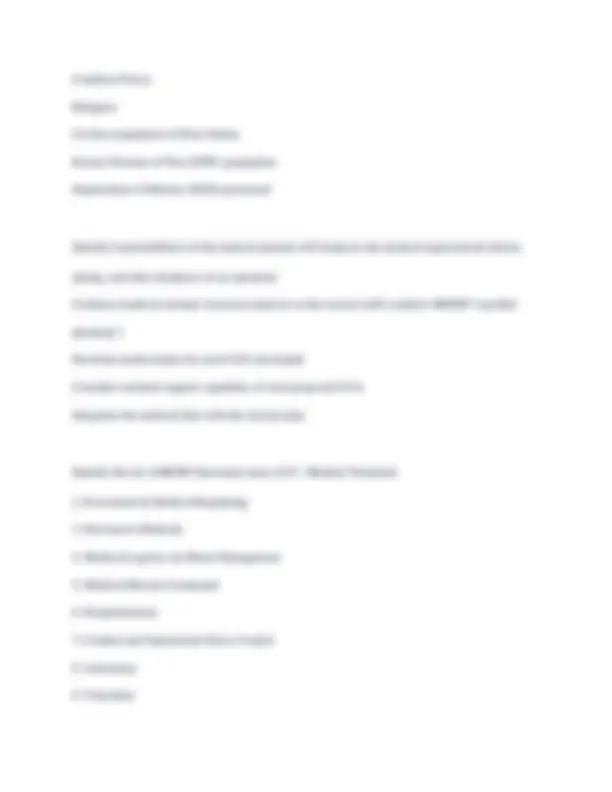
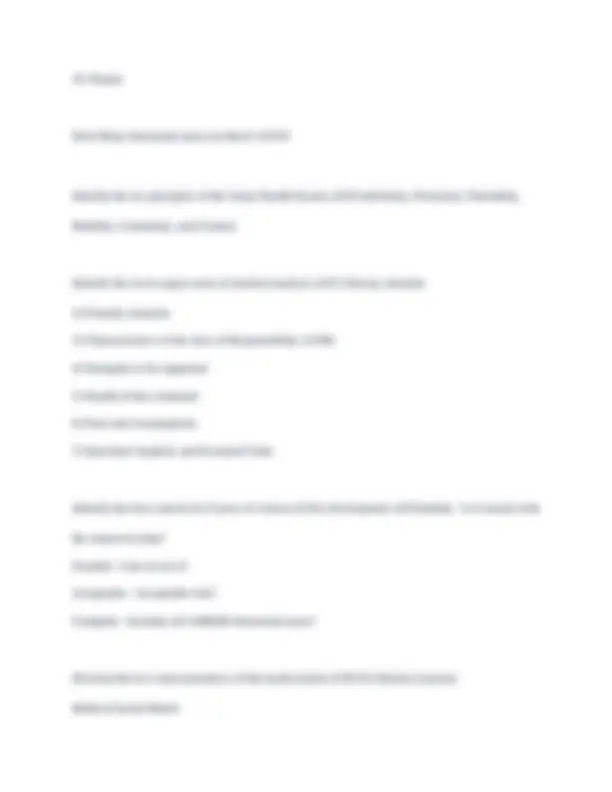
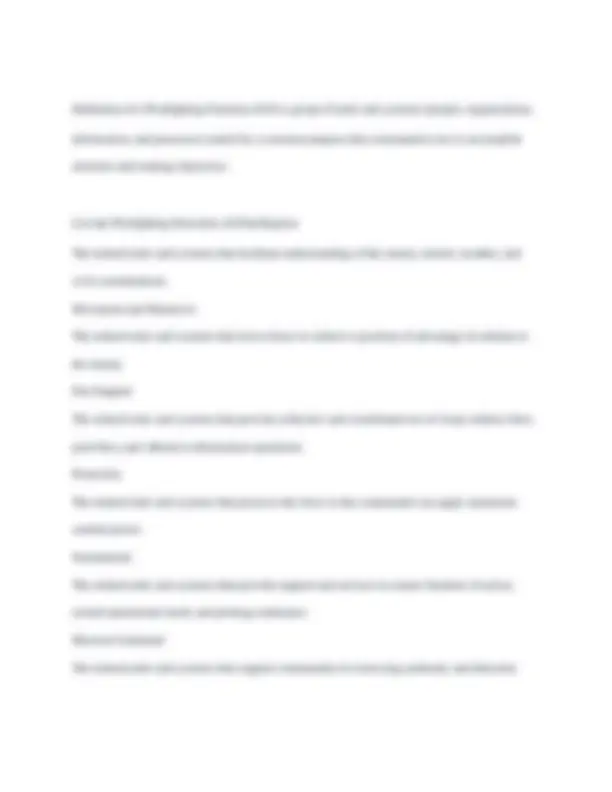


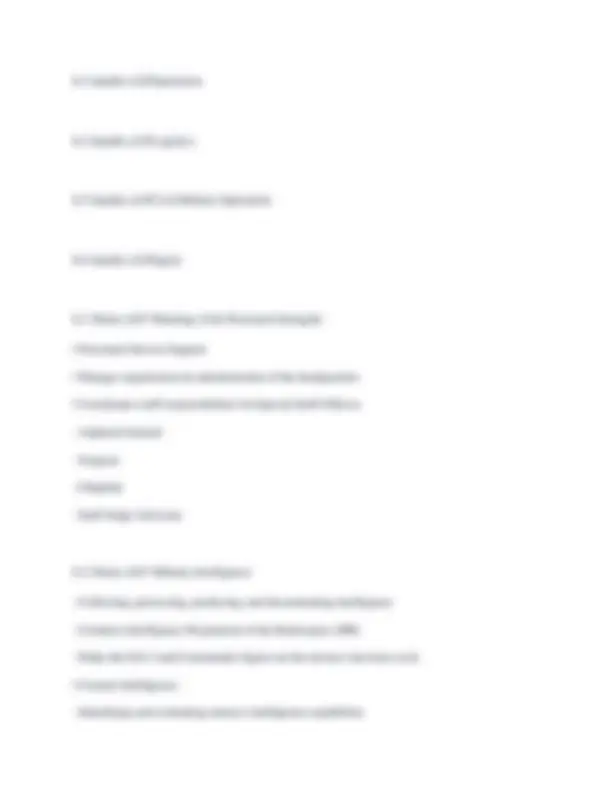
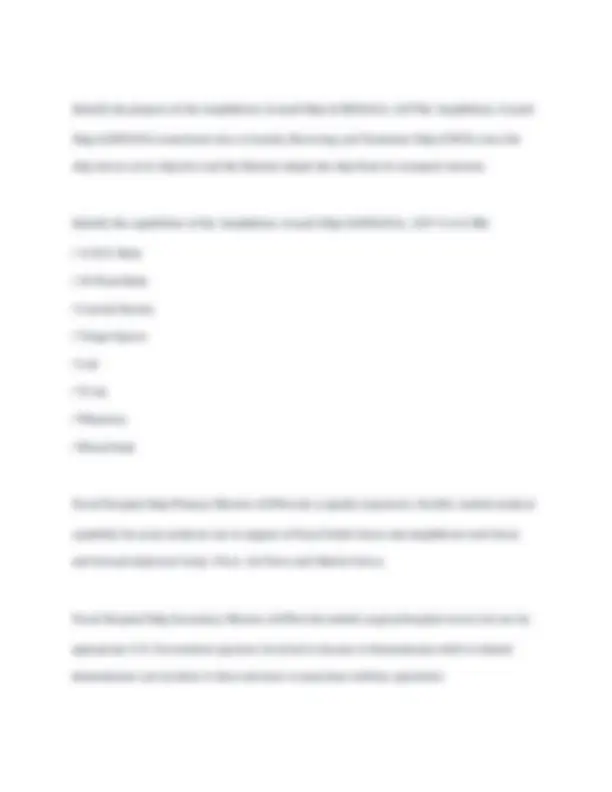
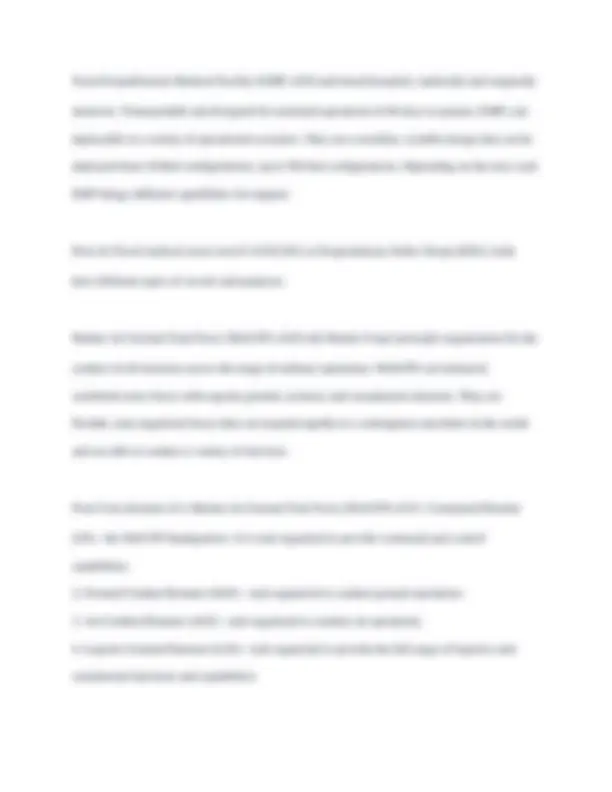


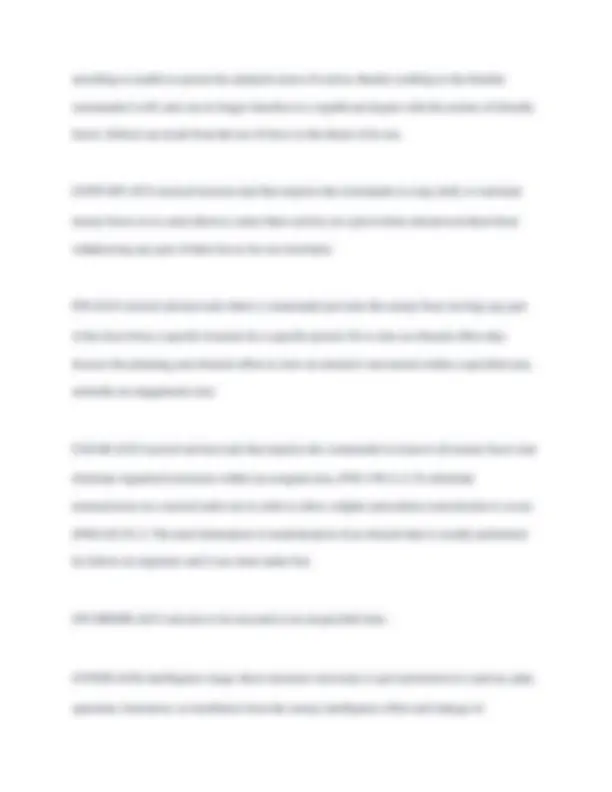

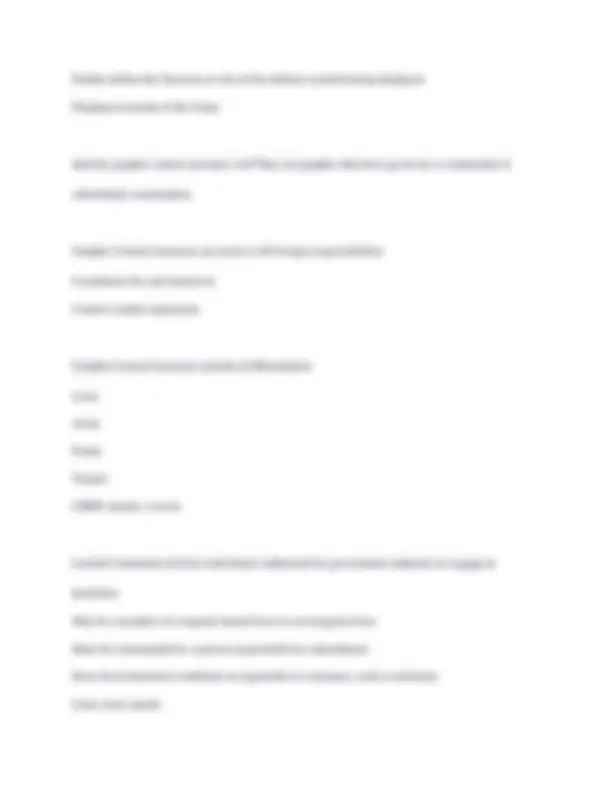
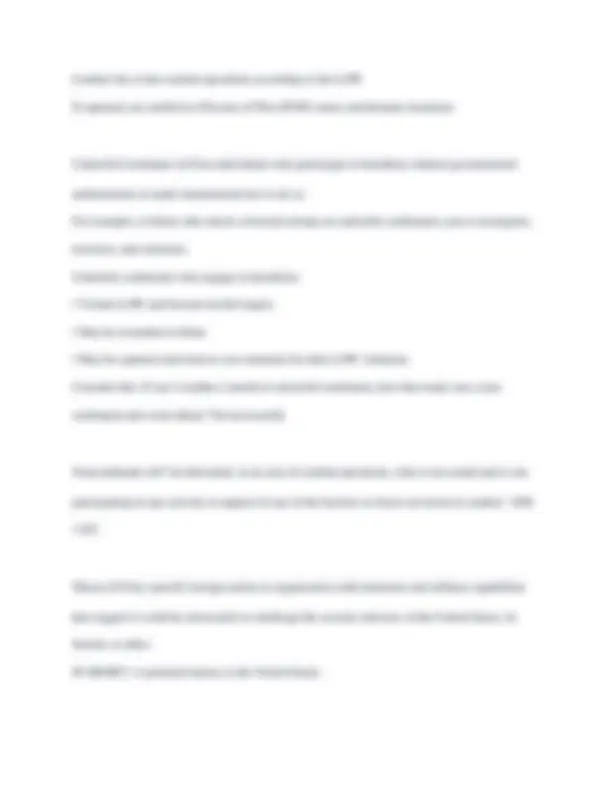
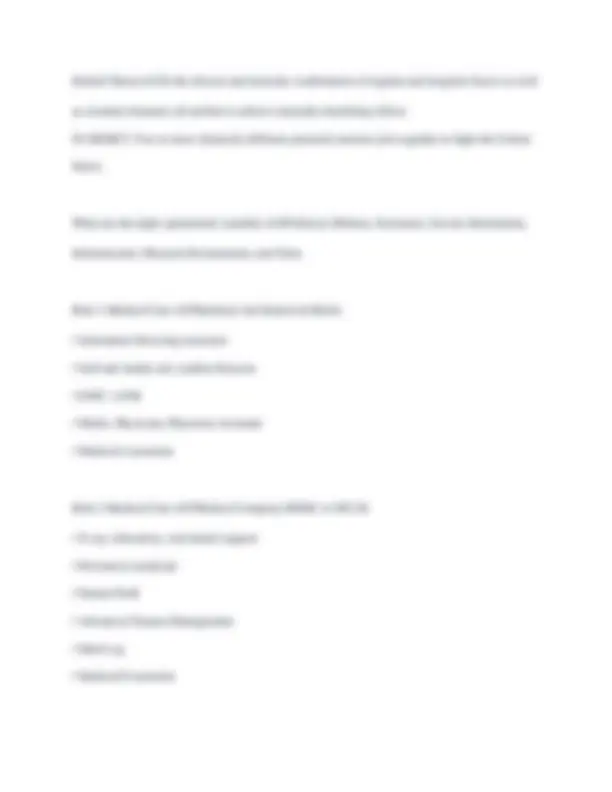

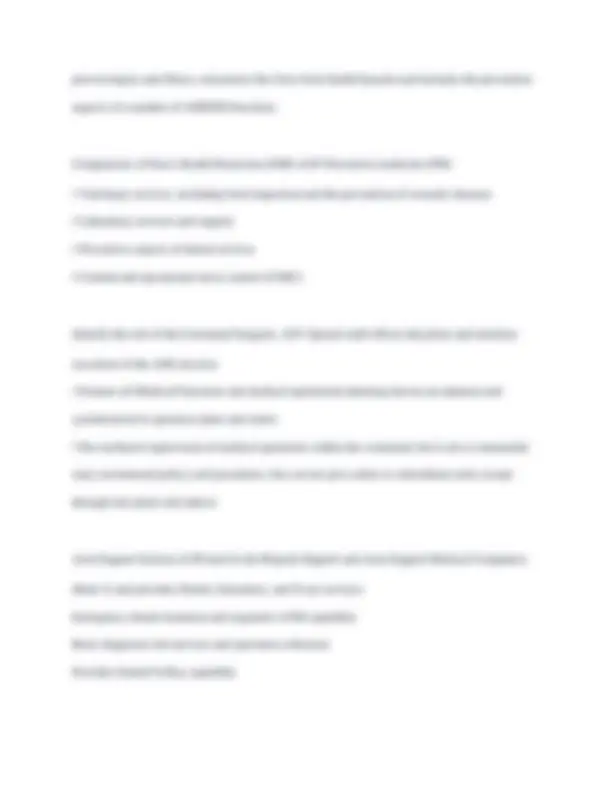
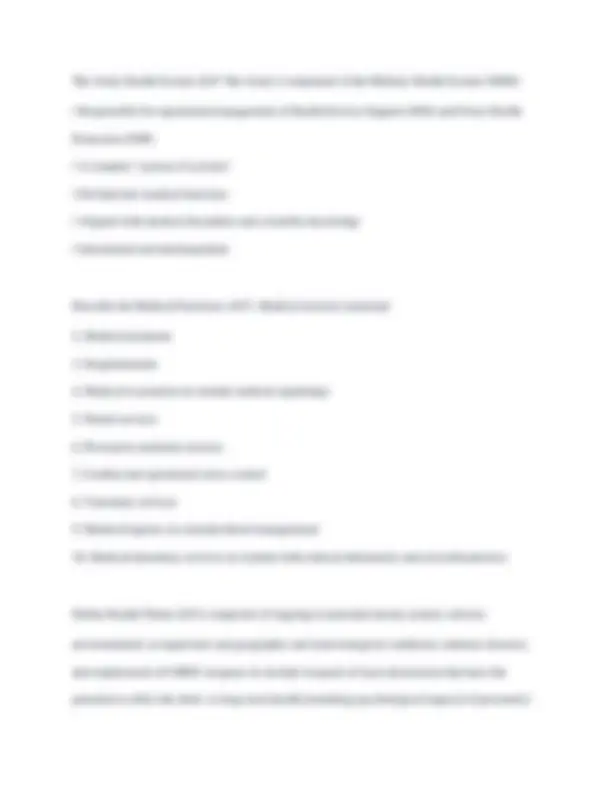
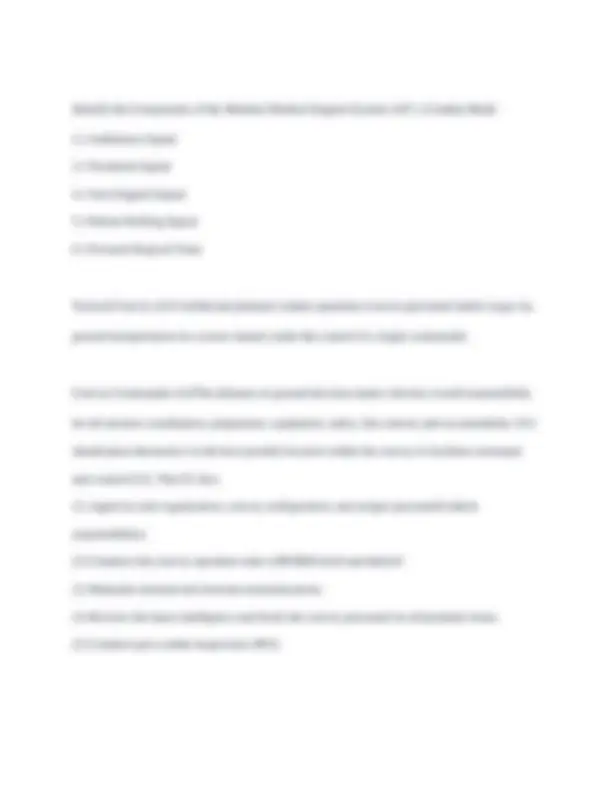
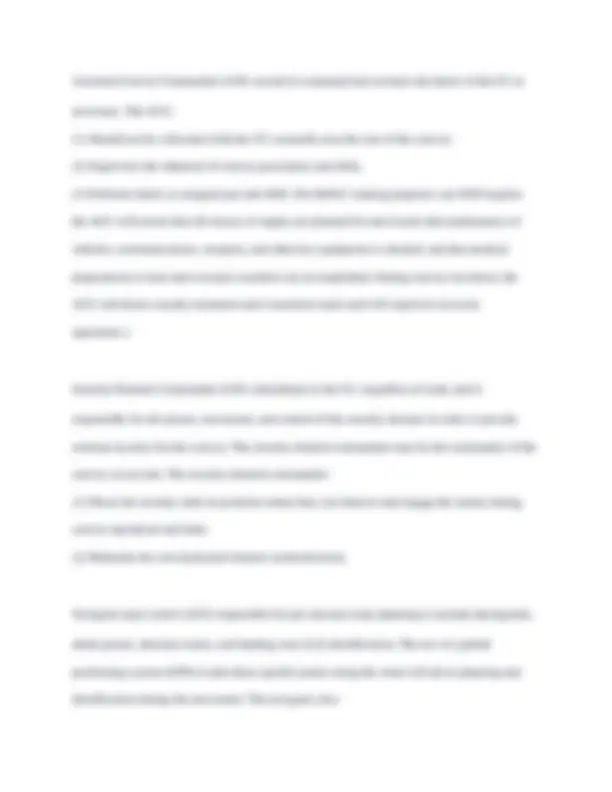
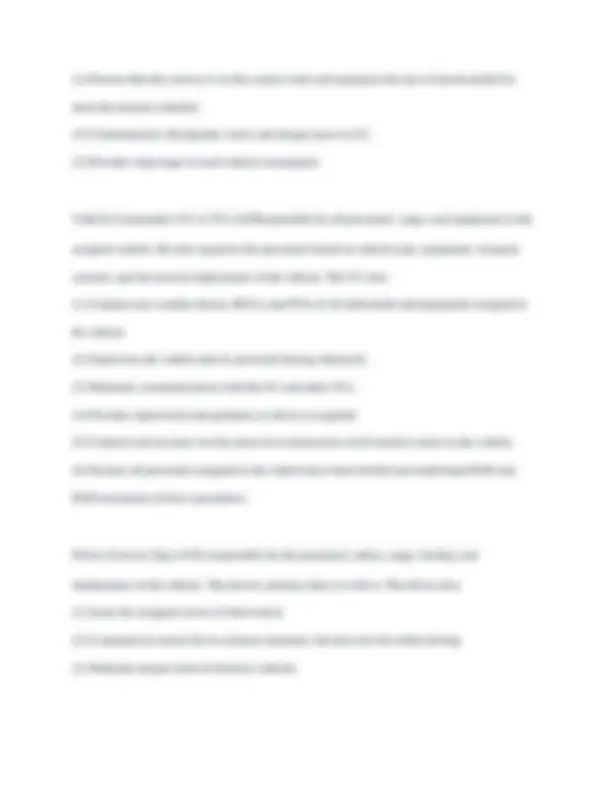
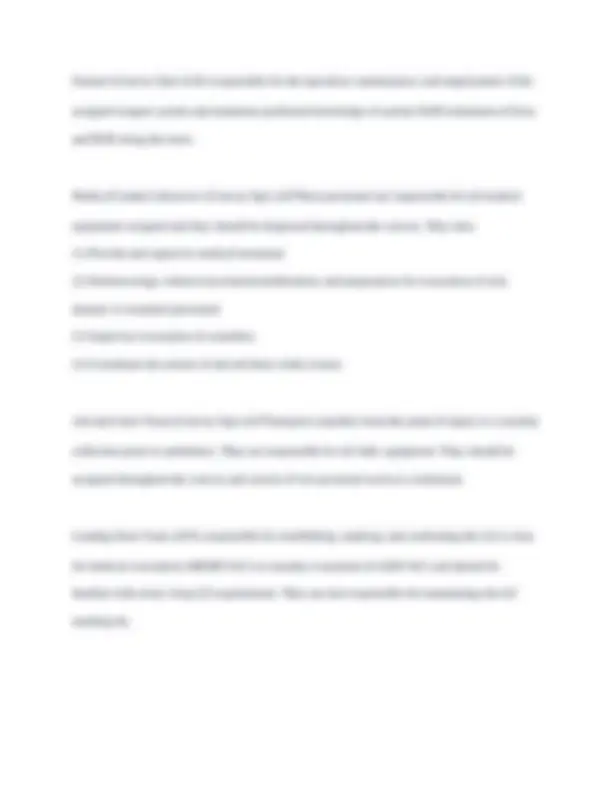
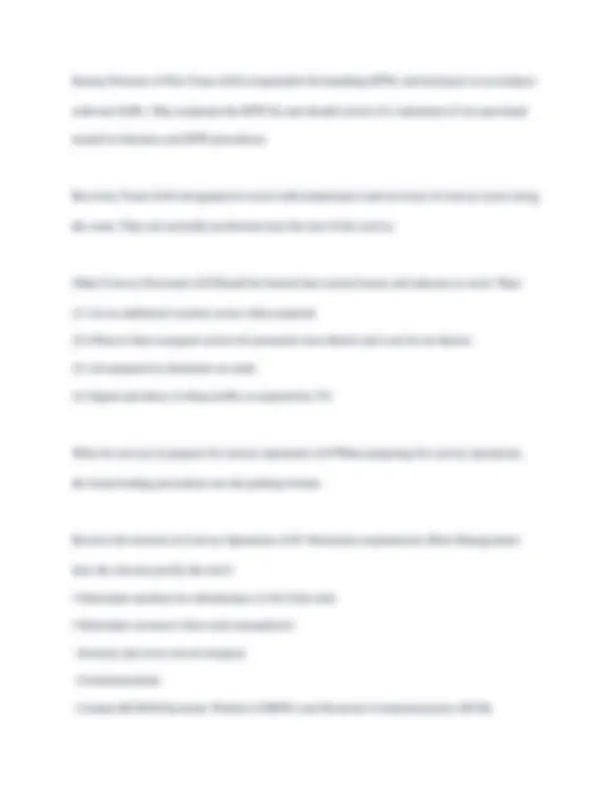
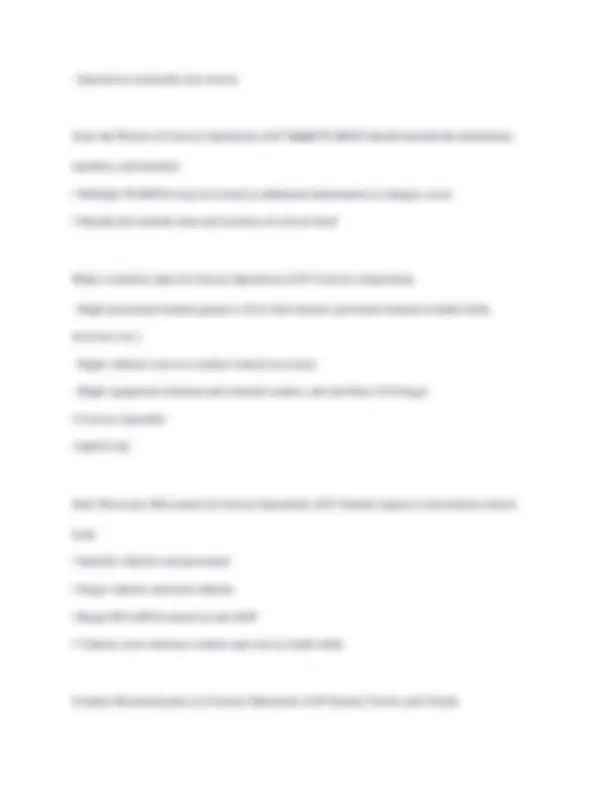
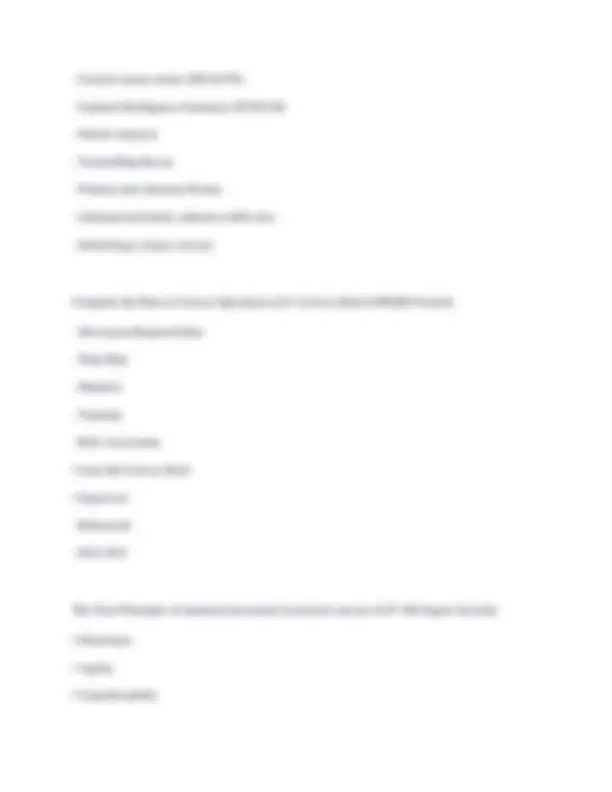
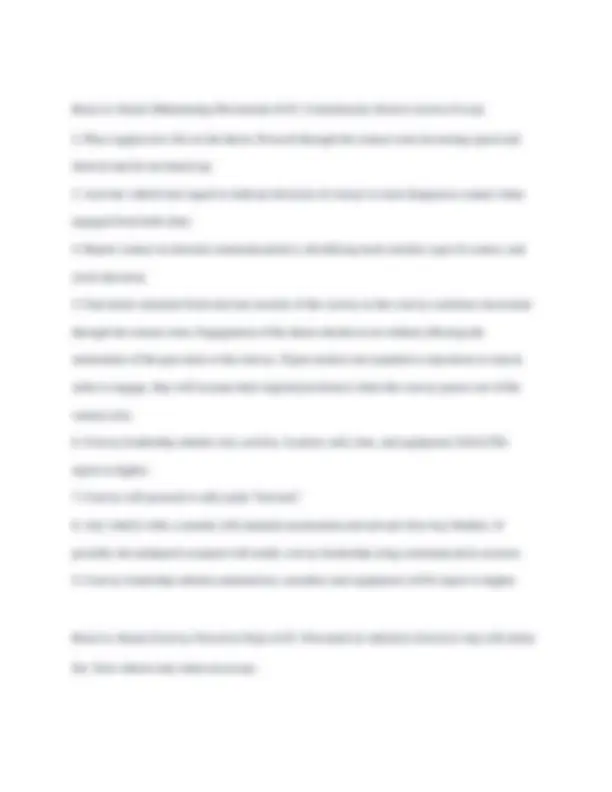
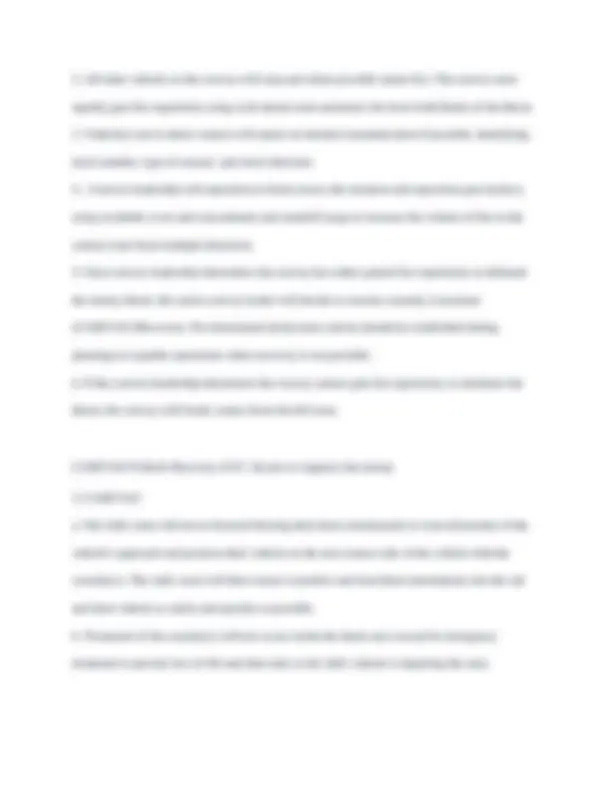
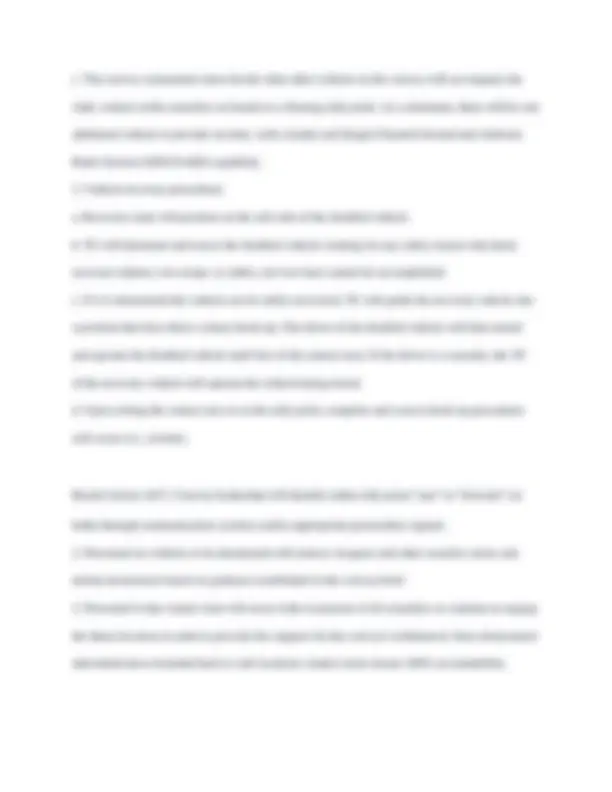
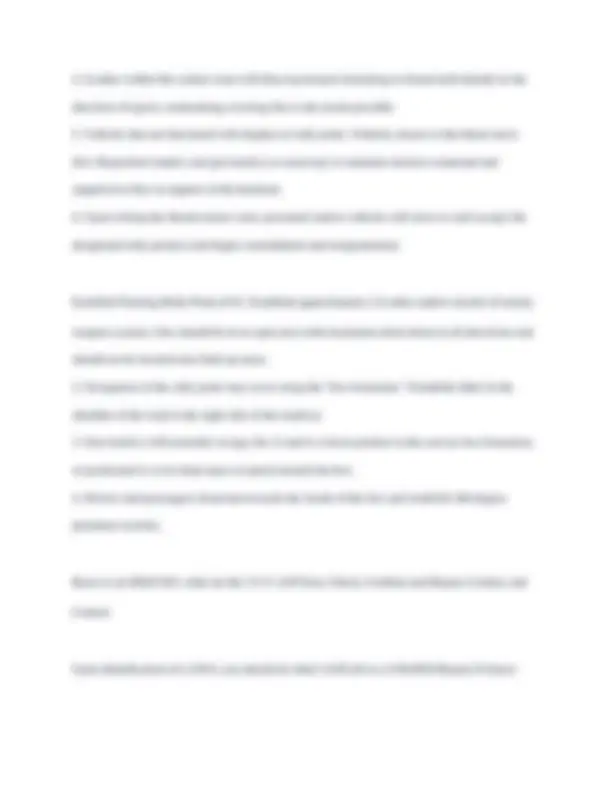
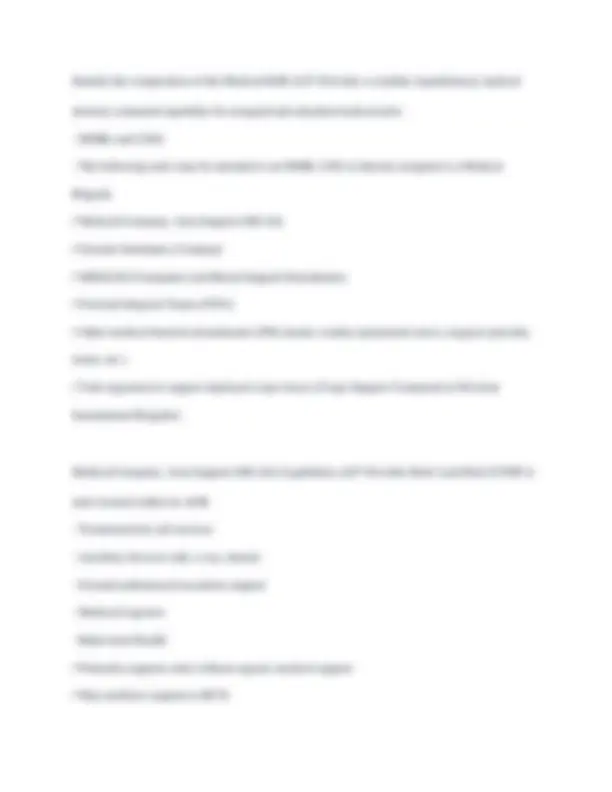
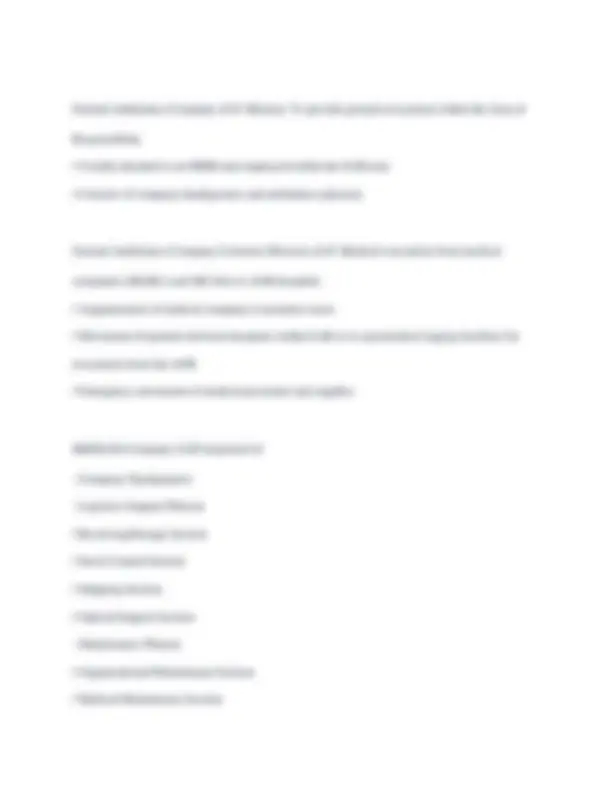
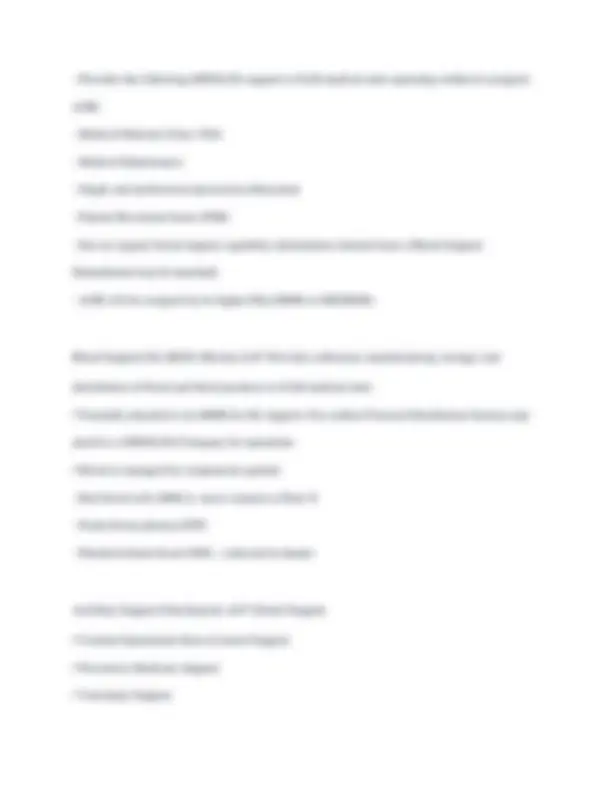
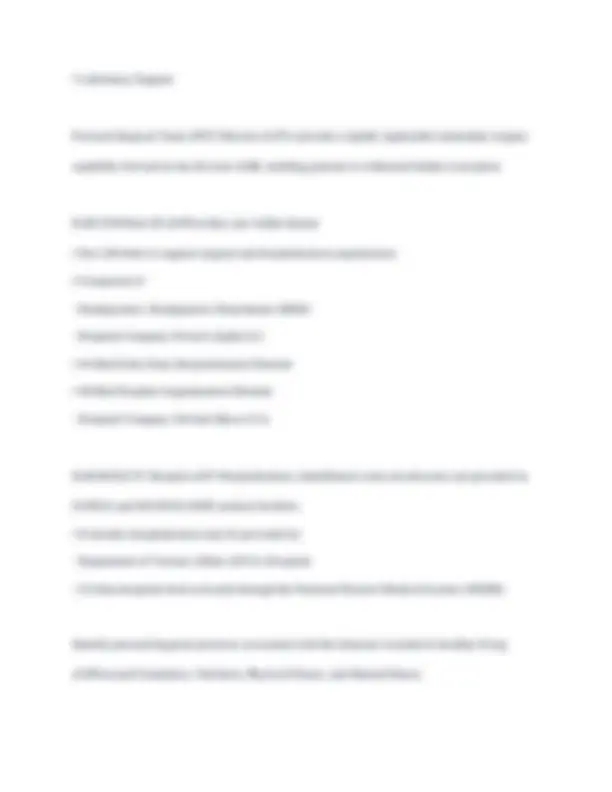

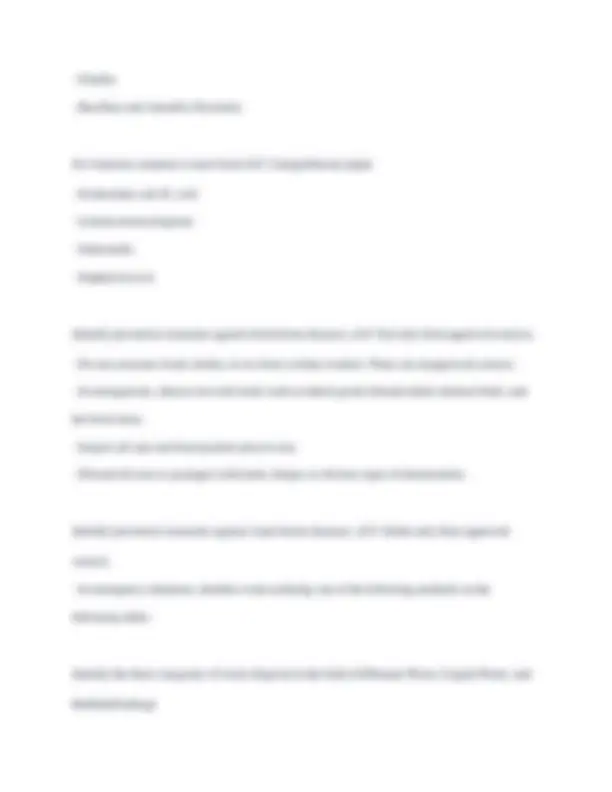
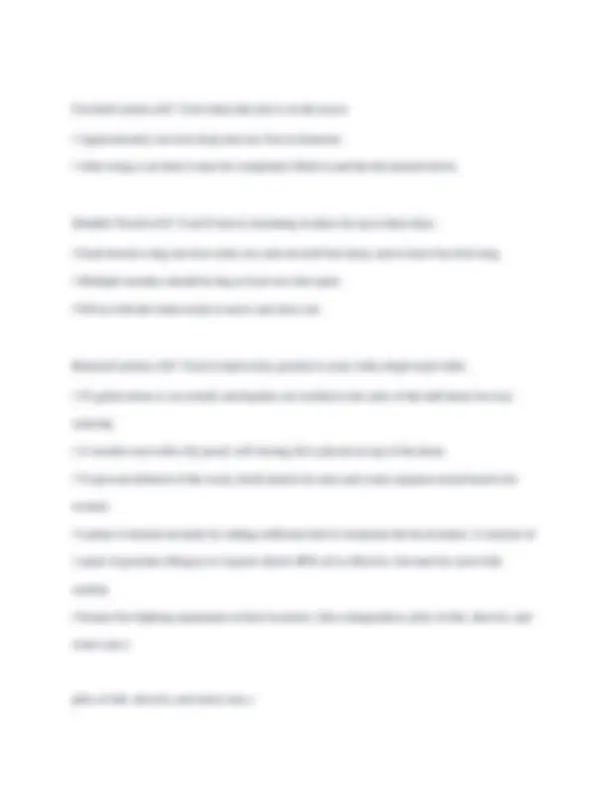
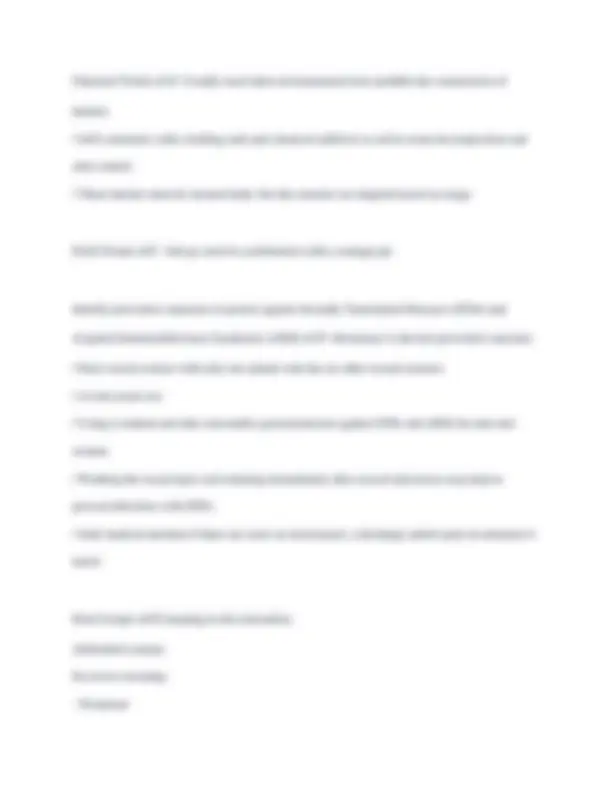
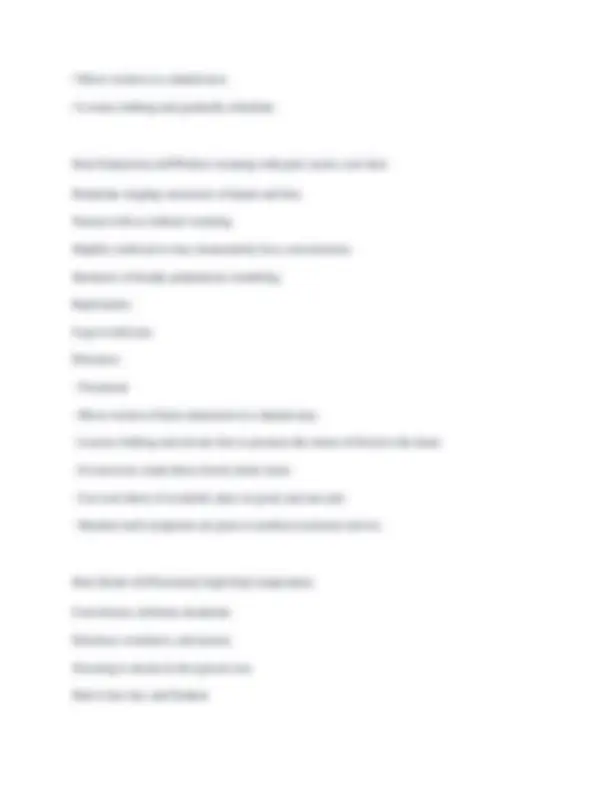
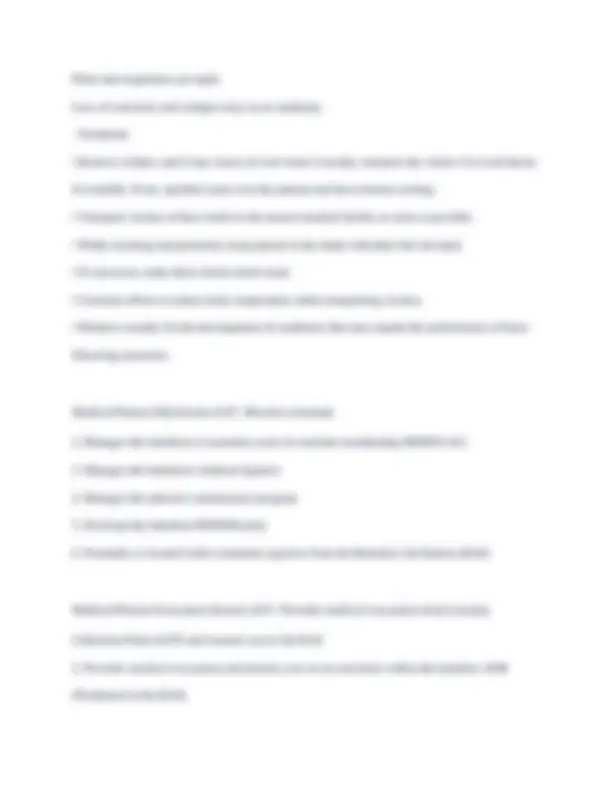
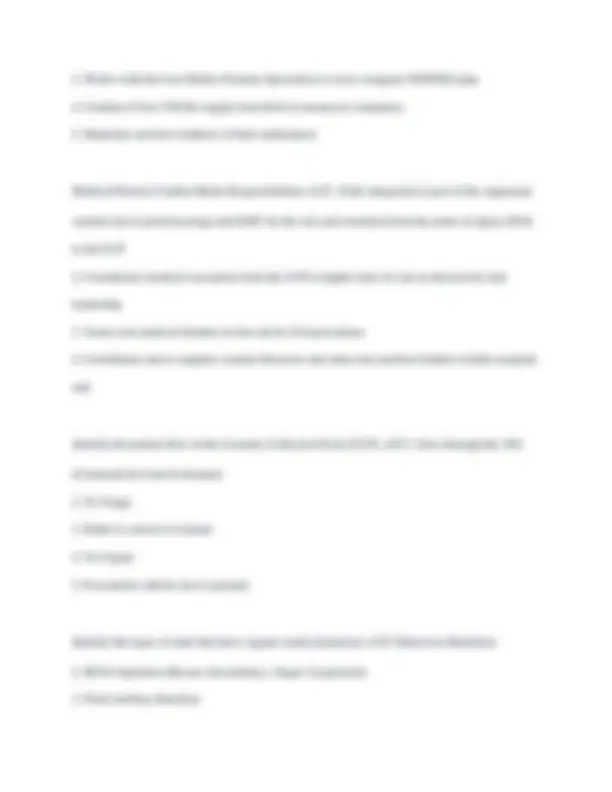
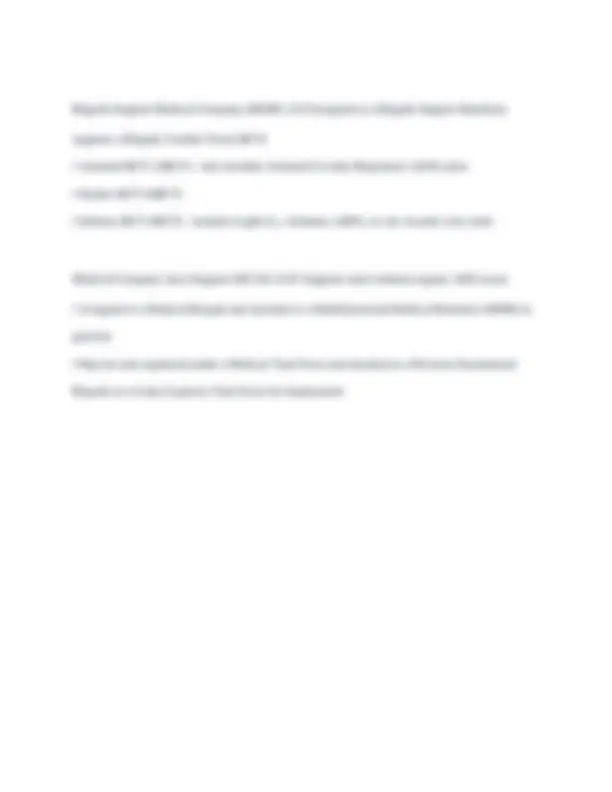


Study with the several resources on Docsity

Earn points by helping other students or get them with a premium plan


Prepare for your exams
Study with the several resources on Docsity

Earn points to download
Earn points by helping other students or get them with a premium plan
Community
Ask the community for help and clear up your study doubts
Discover the best universities in your country according to Docsity users
Free resources
Download our free guides on studying techniques, anxiety management strategies, and thesis advice from Docsity tutors
What are the three types of combat orders. ✔✔Operation Order (OPORD), Warning Order (WARNORD), Fragmentary Order (FRAGORD). Operation Order (OPORD) ✔✔Directive from commander to coordinate the execution of an operation Warning Order (WARNORD) ✔✔Preliminary notice of an order Fragmentary Order (FRAGORD) ✔✔Timely changes of existing orders Identify the paragraphs of a five paragraph OPORD. ✔✔Situation, Mission, Execution, Sustainment, and Command & Signal.
Typology: Exams
1 / 49

This page cannot be seen from the preview
Don't miss anything!










































What are the three types of combat orders. ✔✔Operation Order (OPORD), Warning Order (WARNORD), Fragmentary Order (FRAGORD). Operation Order (OPORD) ✔✔Directive from commander to coordinate the execution of an operation Warning Order (WARNORD) ✔✔Preliminary notice of an order Fragmentary Order (FRAGORD) ✔✔Timely changes of existing orders Identify the paragraphs of a five paragraph OPORD. ✔✔Situation, Mission, Execution, Sustainment, and Command & Signal. Situation Paragraph of an OPORD ✔✔The body of the OPORD begins with the Situation paragraph which provides an overview of the general situation. Mission Paragraph of an OPORD ✔✔A short description of the who, what (task), when, where, and why (purpose) that clearly indicates the action to be taken and the reason for doing so. The
mission is a clear, concise statement from the commander's mission analysis. The mission statement also includes on order missions. Execution Paragraph of an OPORD ✔✔Contains commander's concept and "how to" information needed for mission accomplishment and the desired end state at the completion of the mission. Sustainment Paragraph of an OPORD ✔✔Contains instructions such as the time and composition of LOGPACS, methods of resupply and evacuation for supporting units. Command & Signal Paragraph of an OPORD ✔✔Contains instructions and information relating to command and commo-electronics functions. This breaks down where the command group will locate and the SOI and other applicable commo concerns. List the Medical Operational Planning Factors. ✔✔Maintain a medical presence with the Soldier Maintain the health of the command Save lives Clear the battlefield of casualties Provide state of the art medical care Ensure early return to duty List the major areas of strengths to be supported in medical planning. ✔✔Joint Services Allied Forces
Definition of a Warfighting Function ✔✔Is a group of tasks and systems (people, organizations, information, and processes) united by a common purpose that commanders use to accomplish missions and training objectives. List the Warfighting Functions ✔✔Intelligence The related tasks and systems that facilitate understanding of the enemy, terrain, weather, and civil considerations. Movement and Maneuver The related tasks and systems that move forces to achieve a position of advantage in relation to the enemy. Fire Support The related tasks and systems that provide collective and coordinated use of Army indirect fires, joint fires, and offensive information operations. Protection The related tasks and systems that preserve the force so the commander can apply maximum combat power. Sustainment The related tasks and systems that provide support and services to ensure freedom of action, extend operational reach, and prolong endurance. Mission Command The related tasks and systems that support commanders in exercising authority and direction.
Stryker BCT ✔✔Has Stryker Vehicles (CBT Power like Bradleys, Tanks, Arty) Infantry BCT ✔✔Has some tactical vehicles but is mainly Infantryman on foot! List and distinguish Team level organization ✔✔Led by a CPL/SGT (E4-E5) and is comprised of 4 - 8 Soldiers, or 4 - 8 Individuals. List and distinguish Squad level organization ✔✔Led by a SGT/SSG (E5-E6) and is comprised of 8 - 16 Soldiers, or 2 - 3 Teams. List and distinguish Platoon level organization ✔✔Led by a 2LT/1LT (O1-O2) and is comprised of 16 - 44 Soldiers, or 3 - 5 Squads. List and distinguish Company level organization ✔✔Commanded by a CPT (O3) and is comprised of 60 - 200 Soldiers, or 3 - 5 PLTs List and distinguish Battalion level organization ✔✔Commanded by at LTC (O5) and is comprised of 300 - 1k Soldiers, or 3- 5 Companies. List and distinguish Brigade level organization ✔✔Commanded by a COL (O6) and is comprised of 3.5-4k Soldiers, or 4 - 6 BNs.
List and distinguish Division level organization ✔✔Commanded by a MG (O8, 2 - star) and is comprised of 15,000+ Soldiers, or 4+ BCTs. List and distinguish a Corps level organization ✔✔Commanded by a LTG (O9, 3 - star) and is comprised of 30 - 60k Soldiers, or 2- 4 DIVs. List and distinguish an Army level organization. ✔✔Commanded by a LTG (O10, 4 - star) and is comprised of 30 - 60k Soldiers, or 2- 4 DIVs. List the types of supporting brigades ✔✔Sustainment, Fires, Aviation, Battlefield Surveillance Brigade, Maneuver Enhancement. Identify the element that provides tactical sustainment in a maneuver Company ✔✔Company Trains Identify the element that provides tactical sustainment in a Battalion ✔✔Forward Support Company Identify the element that provides tactical sustainment in a BCT ✔✔Brigade Support Battalion (BSB)
S- 3 handles ✔✔Operations S- 4 handles ✔✔Logistics S- 5 handles ✔✔Civil Military Operations S- 6 handles ✔✔Signal S- 1 Duties ✔✔• Manning (Unit Personnel Strength)
Identify the purpose of the Amphibious Assault Ship (LHD/LHA). ✔✔The Amphibious Assault Ship (LHD/LHA) transforms into a Casualty Receiving and Treatment Ship (CRTS) once the ship arrives at its objective and the Marines depart the ship from it's transport mission. Identify the capabilities of the Amphibious Assault Ship (LHD/LHA). ✔✔• 4 or 6 ORs
Naval Expeditionary Medical Facility (EMF) ✔✔Land-based hospitals, medically and surgically intensive. Transportable and designed for sustained operations of 60 days or greater, EMF's are deployable in a variety of operational scenarios. They are a modular, scalable design that can be deployed from 10 - Bed configurations, up to 504 bed configurations. Depending on the size, each EMF brings different capabilities for support. How do Naval medical assets travel? ✔✔(CSG) or Exepedentiary Strike Group (ESG), both have different types of vessels and purposes. Marine Air Ground Task Force (MAGTF) ✔✔Is the Marine Corps' principle organization for the conduct of all missions across the range of military operations. MAGTFs are balanced, combined-arms forces with organic ground, aviation, and sustainment elements. They are flexible, task-organized forces that can respond rapidly to a contingency anywhere in the world and are able to conduct a variety of missions. Four Core elements of a Marine Air Ground Task Force (MAGTF) ✔✔1. Command Element (CE) - the MAGTF headquarters. It is task organized to provide command and control capabilities.
Emergency Room (ER) capability within 2 hours Operating Room (OR) capability within 4 hours Critical care capability within 6 hours Fully operational within 12 hours of arrival Air Force Theater Hospital (AFTH) ✔✔• Medical and surgical subspecialties
9 personnel broken into 3 - person teams Distinguish between different graphic colors. ✔✔Friendly - Blue or Cyan (if computer generated) Enemy - Red Neutral or Obstacles - Green Unknown - Yellow Operational Terms & Graphics - Green can stand for neural ✔✔Obstacles or Neutral Operational terms ✔✔Are words that commanders, their staffs, and subordinates use must carry the same meaning to everyone. DELAY ✔✔To slow the time of arrival of enemy forces or capabilities or alter the ability of the enemy or adversary to project forces or capabilities. DISRUPT ✔✔A tactical mission task in which a commander integrates direct and indirect fires, terrain, and obstacles to upset an enemy's formation or tempo, interrupt his timetable, or cause enemy forces to commit prematurely or attack in piecemeal fashion. 2. An obstacle effect that focuses fire planning and obstacle effort to cause the enemy to break up his formation and tempo, interrupt his timetable, commit breaching assets prematurely, and attack in a piecemeal effort.
unwilling or unable to pursue his adopted course of action, thereby yielding to the friendly commander's will, and can no longer interfere to a significant degree with the actions of friendly forces. Defeat can result from the use of force or the threat of its use. CONTAIN ✔✔A tactical mission task that requires the commander to stop, hold, or surround enemy forces or to cause them to center their activity on a given front and prevent them from withdrawing any part of their forces for use elsewhere. FIX ✔✔A tactical mission task where a commander prevents the enemy from moving any part of his force from a specific location for a specific period. Fix is also an obstacle effect that focuses fire planning and obstacle effort to slow an attacker's movement within a specified area, normally an engagement area. CLEAR ✔✔A tactical mission task that requires the commander to remove all enemy forces and eliminate organized resistance within an assigned area. (FM 3 - 90 - 1) 2. To eliminate transmissions on a tactical radio net in order to allow a higher-precedence transmission to occur. (FM 6 - 02.53) 3. The total elimination or neutralization of an obstacle that is usually performed by follow-on engineers and is not done under fire. ON ORDER ✔✔A mission to be executed at an unspecified time. COVER ✔✔In intelligence usage, those measures necessary to give protection to a person, plan, operation, formation, or installation from the enemy intelligence effort and leakage of
information. (JP 1 - 02) See ATP 2-01.3. (Army) 1. Protection from the effects of fires. (FM 3 - 96)